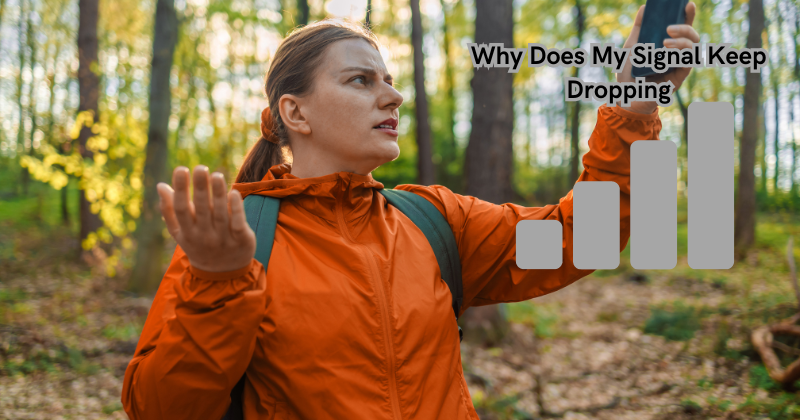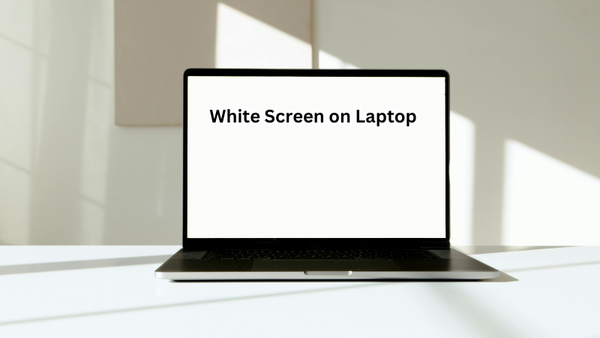Experiencing frequent signal drops can be frustrating and disruptive, impacting various aspects of daily life, from communication to entertainment. Whether it's a Wi-Fi, cellular, or TV signal, persistent interruptions can hinder productivity and cause inconvenience.
Understanding the root causes behind signal instability is crucial for troubleshooting and finding practical solutions. Several variables can contribute to signal disruptions, from environmental factors to technical issues.
Identifying these factors and implementing appropriate measures can lead to a more reliable and consistent signal experience, ultimately improving connectivity and overall user satisfaction.
What is a Dropped Call?
A dropped call is a situation where a phone call abruptly ends due to the signal loss between two devices.
This can happen for various reasons, including network congestion, technical problems, or physical obstructions.
Dropped calls are not only limited to cell phones but can also occur with landline calls and internet-based calls. Cell phone signals are particularly vulnerable to disruptions as they rely on a network of towers and antennas for transmission.
Furthermore, dropped calls can also be a result of device-related issues such as low battery, software glitches, or hardware malfunctions. In some cases, a weak signal reception in a specific location can lead to drop calls consistently. The phone's internal antenna and its placement can also impact the signal strength.
Reasons Why Does My Signal Keep Dropping
Blocking cell phone signals has become increasingly popular over the years, leading to widespread frustration among cell phone users. Apart from signal blockers, there are multiple other reasons that can cause a signal to drop consistently.
There are several reasons behind dropping signals, including natural and human-made challenges. Here are some common reasons and solutions why your signal may keep dropping:
Distance from the Tower & Dead Zones:
One of the main reasons for dropped calls is being too far from a cell tower's range. This can result in a weaker signal and eventually cause call drops or poor network connection. Additionally, certain geographical features such as mountains, valleys, or tall buildings can create dead zones where signals are blocked or weakened.
Cell phone signal boosters can help combat these challenges by improving signal strength and extending coverage in such areas.
Cell signals are generally less reliable in rural or remote areas due to fewer cell towers and more obstacles. Cellular signal boosters can improve coverage and signal strength in such locations, making them a valuable investment for those living or working in rural areas.
Building Construction Materials:
The materials used in constructing a building can also impact cellular signals. Thick concrete or metal walls, for instance, can create barriers that weaken or block cell phone reception. In such cases, even being close to a tower may not guarantee strong signal strength.
To overcome this challenge, Wi-Fi calling and Voice over LTE (VoLTE) are alternatives that use internet connectivity to make and receive calls. These methods do not rely on traditional cellular networks, making them viable options for those living or working in buildings with poor cell reception.
Interference from Electronic Devices:
Electronic devices such as microwaves, cordless phones, and even other cell phones can cause interference with cellular signals.
This is because these devices operate on similar frequencies used by cell phone networks, leading to disruption of signals. Dropping calls or slow internet speeds are common signs of such interference.
To avoid this interference, it's essential to keep your cell phone away from such devices. Additionally, using a signal booster can also mitigate the impact of electronic interference and improve overall signal quality.
Mobile Device Issues:
Device-related issues can also cause dropped calls. These include low battery levels, software glitches, and even faulty hardware. As a preventive measure, it's important to keep your phone updated with the latest software versions and ensure that the battery is charged sufficiently.
If the problem persists, contacting your service provider or getting your device checked by a professional may be necessary. Android phone users can also check their network settings and enable the "Enhanced 4G LTE Mode" to improve call quality.
Tower Handoff Problems:
In the case of a cellular network, when you are moving, and your phone loses signal from one tower, it should seamlessly connect to another nearby tower without any interruption. However, in some cases, this handoff may fail due to technical issues or network congestion, resulting in dropped calls.
The nearest cell tower location can be checked with your service provider to ensure you are within range and connected to the strongest signal. While this may be out of your control, having a cell phone signal booster can help improve signal strength and reduce the chances of these handoff problems occurring.
Faulty SIM card:
In rare cases, a dropped call can be attributed to a faulty SIM card. Cell signal issues may arise if the SIM card is damaged or not inserted correctly.
If you experience frequent signal drops and other troubleshooting methods do not seem to work, it may be worth contacting your service provider and requesting a new SIM card. WIFI calling and VoLTE can also be used as temporary solutions until you receive a new SIM card.
These are some of the common reasons for dropped calls and ways to overcome them. However, if you encounter persistent signal drops despite troubleshooting, it is advisable to contact your service provider for further assistance.
Troubleshoot Your Signal Drops:
If you're experiencing frequent signal drops, here are some troubleshooting steps that may help improve your signal reliability:
- Check for network outages: Sometimes, signal drops can be due to a temporary network outage in your area. You can check for any reported network issues on your service provider's website or social media pages.
- Restart your device: A simple restart can often resolve software glitches that may cause dropped calls.
- Move to a different location: If you're in an area with a weak signal, try moving to a different location to see if the signal improves.
- Use aeroplane mode: Turning on aeroplane mode for a few seconds and then turning it off can sometimes help refresh your phone's connection to the network.
- Update your device software: Keep your phone updated with the latest software versions, as they often include bug fixes that can improve signal reliability. Cellular devices have become an essential part of our daily lives, and it's important to ensure that we have a reliable connection wherever we go.
- Invest in a cell phone signal booster: If you frequently experience poor signal in a specific location, consider investing in a cell phone signal booster to improve your overall connectivity.
Remember, dropped calls can be frustrating, but with the right knowledge and tools, you can minimize their occurrence and enjoy uninterrupted communication. Cellular devices have become an essential part of our daily lives, and it's important to ensure that we have a reliable connection wherever we go.
What is the Safe Distance From a Cell Tower?
The safe distance from a cell tower varies depending on several factors, including the strength of the signal emitted by the tower and the type of antenna used. Generally, it is recommended to maintain a safe distance of at least 1.6 kilometers (1 mile) from a cell tower.
However, keep in mind that being further away from a cell tower may result in weaker signal strength and potentially dropped calls.
It's essential to find a balance between distance and signal strength when considering the safe distance from a cell tower. Plus, always follow any safety guidelines provided by your service provider or local authorities.
Best Signal Boosters for Home and Office
If you're looking to improve cellular signal strength in your home or office, here are some of the best signal boosters available on the market:
- weBoost Home MultiRoom: This booster is designed for small homes and apartments, providing coverage for multiple rooms. It can support all major carriers and improve signal strength up to 65 dB.
- SureCall Fusion4Home: With up to 72 dB gain, this booster is ideal for medium-sized homes and offices. It also supports all major carriers and can cover multiple rooms.
- HiBoost Home 10K Smart Link: This powerful booster has a maximum gain of 70 dB, making it suitable for large homes and offices. It also comes with a user-friendly app that allows for remote monitoring and adjustments.
- WilsonPro 1050: Designed for larger buildings, this booster has a gain of up to 70 dB and can support multiple carriers. It also comes with professional installation services for optimal coverage.
Remember to check compatibility with your carrier before purchasing a signal booster, as well as any necessary regulations in your area for using one. With a reliable signal booster, you can enjoy improved call quality and faster data speeds in your home or office.
FAQs
What kills the phone signal?
There are several factors that can cause poor phone signal, including physical barriers such as buildings or mountains, distance from cell towers, network congestion, electronic interference, and device-related issues. Using a cell phone signal booster can help mitigate some of these problems and improve overall signal strength.
How do I stop my phone from losing signal?
Apart from using a cell phone signal booster, there are also some other measures you can take to prevent signal drops. These include keeping your phone turned on and charged sufficiently, updating your device software, and avoiding areas with known network issues. You can also contact your service provider for assistance if the problem persists.
What happens if I wrap my phone in aluminium foil?
Wrapping your phone in aluminium foil is not a recommended method for improving signal strength. It may temporarily block electronic interference, but it can also cause your device to overheat and potentially damage it. Additionally, it can interfere with GPS and Wi-Fi signals, making your overall connectivity worse.
How can I make my 4G signal stronger?
To get the best 4G signal, make sure you're in an area with good coverage from your carrier. You can also try moving to a higher location or near a window for better reception. Using Wi-Fi calling and VoLTE (Voice over LTE) can also help improve call quality and reliability.
Conclusion
In conclusion, the persistence of signal dropouts across various technologies such as Wi-Fi, cellular, or TV signals can significantly impact daily routines and user experience.
From environmental interference to hardware malfunctions, a myriad of factors can contribute to signal instability. Addressing these issues through thorough troubleshooting, potential equipment upgrades, and optimizing network configurations is essential for restoring consistent connectivity.
Moreover, staying informed about technological advancements and best practices for signal management can aid in preemptively mitigating future disruptions.
By proactively addressing the root causes of signal drops, individuals can foster an environment of reliable and uninterrupted connectivity, ensuring seamless communication, productivity, and entertainment experiences.





